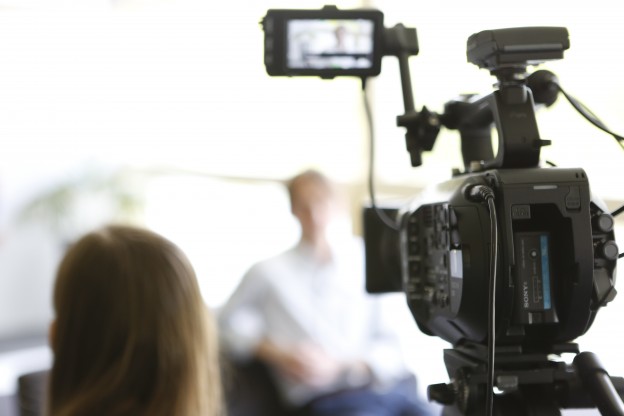Here are six ways to ensure you’re prepared for an effective interview or piece to camera, whether for television, radio or podcast. Follow these simple guidelines and you’ll do just fine. Don’t forget to smile and greet the journalist, they’ll guide and help you, but having some understanding of the process will certainly help everything run smoothly.
Choose your content carefully – focus only on the key messages, you want to answer questions but remember to keep to your agenda and stay on point.
- Keep it short and punchy – short, snappy sentences show that you’re confident and provide good editable material.
- Practice makes perfect. If you can record yourself (webcam etc), great – but a mirror or a willing friend will do!
- Don’t panic – speak deliberately and don’t rush. Looking great on camera!
Avoid alcohol the night before the shoot and stay hydrated on the day you are filming – hydrated skin looks like healthy skin!
Clothes:
- Wear solid colours – stripes, checks and small patterns can strobe on camera
- Wear pastel colours – White looks too bright and Navy and Black look too dark
- Avoid clothes that are glossy or shiny – these can look odd on camera
- Be smart, but be comfortable – “perhaps bring a few options of clothing
- If you have the option of contact lenses or glasses, try to wear contact lenses as they don’t reflect the light
Jewellery:
- Avoid glossy or reflective jewellery
Don’t wear too much – it can be distracting and make too much noise on camera (the worst offenders for this are rings clanking together and beaded necklaces rattling.
Make-up:
- Everybody that will be on camera should wear at least a small amount of makeup. A little bit of powder will dull any reflection from the additional lighting
- For people that normally wear make-up (eye shadow, blusher etc), follow the lead from the clothing section – pastel colours and nothing glittery
Body Language:
- Remember to smile – smiling when you are presenting helps you to relax
- Don’t slouch! Try and relax – shake out the nerves if you need to!
- Gesture if it’s normal to you in every day conversation.
- Move (but not too much!), don’t make eye contact with the camera lens unless you’re talking directly to the audience.
- Vary your pitch, speak up and speak clearly and don’t rush your sentences
Try to relax as best you can. It’s so basic to prepare and not just rely on your subject expertise, you might get questions you don’t expect, you might even find your interviewer playing devil’s advocate. It’s alright to show some passion, but don’t get cross or impatient, these emotions will be amplified on camera or on the radio. If you’re not sure of the question, then ask the interviewer to repeat it. If you’re not sure of the answer, then take a second to compose it in your head. Don’t wing it, if the interviewer is straying from your subject area then tell them that you’re not confident in answering or that it wouldn’t be appropriate to comment. They’ll adjust and ask you something else.
Ask your colleagues and friends to listen or watch the interview when it’s aired or broadcasted. People who know you can be helpful in pointing out opportunities to improve the way you come across. You get better by doing it more, you’ll understand the activity that is happening around the interviewer, you’ll be able to help them and that’s sure to help you tell your story or present your ideas in the clearest, accessible and engaging way.

